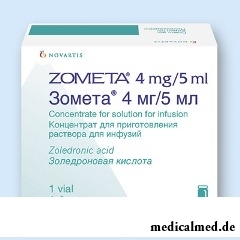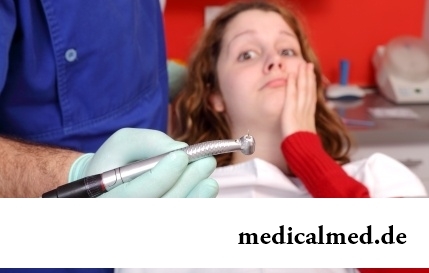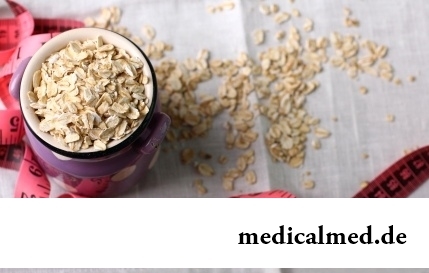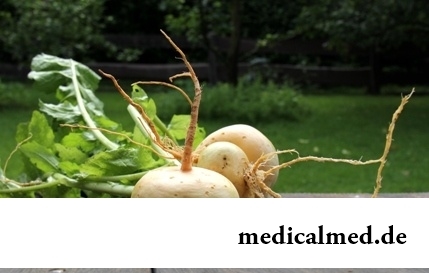





Zometa
Application instruction:
 Zometa – inhibitor of a resorption of a bone tissue at metastasises in a bone.
Zometa – inhibitor of a resorption of a bone tissue at metastasises in a bone.
Form of release and structure
Dosage forms:
- Concentrate for preparation of solution for infusions: transparent colourless liquid (on 5 ml in plastic colourless bottles, in a cardboard pack 1 bottle);
- Solution for infusions: colourless transparent liquid (on 100 ml in plastic bottles, in a cardboard pack 1 bottle).
Active ingredient of Zometa – zoledronovy acid:
- 1 bottle of a concentrate – 4,264 mg of monohydrate of zoledronovy acid that is equivalent to the content of 4 mg of zoledronovy acid anhydrous;
- 1 bottle of solution – 4 mg.
Auxiliary components:
- Concentrate: sodium citrate, Mannitolum, nitrogen, water for injections;
- Solution: Mannitolum, sodium citrate a dihydrate, water for injections.
Indications to use
- Metastasises in a bone of malignant widespread tumors (a breast cancer, a prostate cancer), a multiple myeloma, including prevention of decrease in risk of a compression of a spinal cord, pathological changes, hypercalcemias against the background of a tumor, and the needs for carrying out surgeries on a bone or radiation therapy;
- The hypercalcemia caused by a malignant new growth.
Contraindications
- Period of pregnancy and breastfeeding;
- Children's age;
- Hypersensitivity to bisfosfonata and components of drug.
With care Zomet should appoint at the expressed abnormal liver functions.
Use of drug at a renal failure at patients with the hypercalcemia caused by a malignant tumor is possible if the potential advantage of therapy prevails over the existing risk. Administration of drug by the patient with heavy renal failures is not recommended: at creatinine level in blood serum more than 265 µmol/l at patients with metastasises in a bone, and more than 400 µmol/l at the hypercalcemia caused by a malignant tumor.
Route of administration and dosage
The concentrate to preparation of solution for infusions and solution for infusions is applied by intravenous (in/in) drop by introductions.
Solution for cultivation of a concentrate should not contain calcium! Solution for infusion is prepared with observance of rules of an asepsis. Just before introduction contents of 1 bottle of a concentrate should be parted in 100 ml 0,9% of solution of sodium of chloride or 5% of solution of a dextrose. It is possible to store unused solution no more than 24 hours from the moment of preparation at a temperature of 2-8 °C, and before introduction it should be brought to room temperature, previously having got from the refrigerator.
I will sweep up it is impossible to mix with calciferous or any bivalent cations solutions (Ringer's solution a lactate) and with other medicines therefore for administration of solution of zoledronovy acid it is necessary to use separate system for infusions.
Drop in/in introduction not less than 15 minutes have to last.
The recommended dosing:
- Metastasises in a bone of widespread malignant tumors and a multiple myeloma: on 4 mg of 1 times in 3-4 weeks. It is necessary to appoint drug with a concomitant use in 500 mg of calcium and 400 international units (IU) of vitamin D a day;
- The hypercalcemia caused by a malignant tumor (level of content of calcium with correction on concentration of albumine more than 12 mg/dl or 3 mmol/l): 4 mg;
- Treatment a metastasis in a bone at patients with easy or moderate renal failures (the clearance of creatinine (CC) of 30-60 ml/min.): at KK: 30-39 ml/min. – 3 mg, 40-49 ml/min. – 3,3 mg, 50-60 ml/min. – 3,5 mg of zoledronovy acid.
Before Zometa's introduction, in parallel or after it the patient should appoint introduction of normal saline solution to provide adequate hydration.
Before each administration of drug it is necessary to define concentration of serumal creatinine, at a renal failure introduction of the next dose should be postponed. Parameters of a renal failure:
- Patients with normal (less than 1,4 mg/dl) reference values of creatinine – at increase in level of concentration of serumal creatinine on 0,5 mg/dl;
- Patients with the initial level of creatinine more than 1,4 mg/dl – at increase in content of serumal creatinine on 1 mg/dl.
It is possible to resume treatment in a former dose only after recovery of concentration of creatinine to initial (plus or minus of 10%) level.
Side effects
- Bodies of a hemopoiesis: often – anemia; sometimes – a leukopenia, thrombocytopenia; seldom – a pancytopenia;
- Urinary system: often – renal failures; sometimes – a hamaturia, an acute renal failure, a proteinuria;
- Nervous system: often – a headache; sometimes – disturbances of flavoring feelings, dizziness, a giposteziya, paresthesias, a hyperesthesia, frustration of a dream, feeling of alarm, a tremor; seldom – confusion of consciousness;
- Alimentary system: often – anorexia, nausea, vomiting; sometimes – dryness in a mouth, abdominal pains, diarrhea, a lock, stomatitis, dyspepsia;
- Organ of sight: often – conjunctivitis; sometimes – "blurring" of sight; very seldom – an episcleritis, a uveitis;
- Musculoskeletal system: often – a mialgiya, ostealgias, generalized pains, an arthralgia; sometimes – muscular spasms;
- Respiratory system: sometimes – cough, short wind;
- Cardiovascular system: sometimes – the expressed decrease or increase in the arterial pressure (AP); seldom – bradycardia;
- Immune system: sometimes – hypersensitivity reactions; seldom – a Quincke's disease;
- Dermatological reactions: sometimes – a skin itch, the increased perspiration, rash (including erythematic and macular);
- Laboratory indicators: very often – a hypophosphatemia; often – a hypocalcemia, increase in concentration of creatinine and urea in blood serum; sometimes – a hypopotassemia, a hypomagnesiemia; seldom – a hypernatremia, a hyperpotassemia;
- Others: often – a grippopodobny syndrome (a fever, a febricula, heat, disease state), fever; sometimes – thorax pain, peripheral hypostases, an adynamy, increase in body weight; very seldom – the decrease in the ABP causing a faint or a circulator collapse (generally at patients with risk factors), a bronkhokonstriktion, drowsiness development, fibrillation of auricles, anaphylactic reactions or shock, a small tortoiseshell;
- Local reactions: irritation, pain, hypostasis, in a drug injection site – formation of infiltrate.
Special instructions
At Zometa's appointment at a renal failure at patients with the hypercalcemia caused by a malignant new growth, the main criterion for evaluation of expediency of therapy excess of advantage of use of drug over potential risk is.
Before each administration of solution it is required to determine the level of content of creatinine in blood serum.
At bone metastasises at patients with a renal failure weak and moderate severity treatment should be begun with introduction of the lowered doses. At emergence of functional disorder of kidneys during treatment it is possible to continue therapy only after recovery to initial (a plus-minus of 10%) the level of concentration of creatinine.
Because of risk of development of complications from cardiovascular system against the background of an overhydratation of the patient administration of drug should be begun only after assessment of a condition of hydration of an organism. In case of disturbances the patient should enter normal saline solution to, into time or after drug infusion.
Zometa's use needs to be accompanied with constant control of level of content of creatinine, phosphorus, calcium, magnesium in blood serum. At development of a hypophosphatemia, hypocalcemia or hypomagnesiemia to the patient in addition appoint introduction of appropriate means.
At administration of drug for prevention of decrease in risk of a compression of a spinal cord, pathological changes, the hypercalcemia caused by a tumor, it is necessary to consider decrease in need for carrying out surgical interventions on a bone or radiation therapy that the therapeutic effect occurs in 2-3 months of treatment.
Treat the risk factors influencing development of renal failures: the previous renal failure, dehydration, repeated introduction of bisfosfonat, use of nefrotoksichny means, too bystry administration of solution of Zometa.
During treatment carrying out any dental manipulations therefore before purpose of drug of the patient has to undergo dental inspection is not recommended, cure problem teeth and receive recommendations of need of strict observance of rules of hygiene of a mouth.
Oncological patients have a risk of osteomyelitis, infectious and inflammatory pathologies of an oral cavity, a jaw osteonecrosis against the background of antineoplastic therapy.
Treat risk factors of an osteonecrosis of a jaw: cancer and the treatment accompanying it (use of corticosteroids, chemotherapy, radiation therapy), the accompanying pathologies (including anemia, the previous oral cavity disease, a coagulopathy, infections).
Against the background of use of zoledronovy acid development of a strong passing joint pain, muscles and bones is possible.
Contraindicated simultaneous use of Aklasta whose active ingredient is zoledronovy acid.
Influence of drug on ability of the patient to control of vehicles and mechanisms is not established.
Medicinal interaction
Clinically significant interaction at Zometa's combination to antineoplastic drugs, diuretics, antibiotics, analgetics and other means of antineoplastic therapy is noted.
It is established that zoledronovy acid does not inhibit enzymes of system of P450 cytochrome and has no considerable linkng with proteins of plasma.
It is necessary to be careful at use in a combination with aminoglycosides (as because of simultaneous effect of drugs the risk of increase in level of concentration of calcium increases in a blood plasma) and the medicines having the expressed nephrotoxic effect.
At a multiple myeloma the combination to a thalidomide promotes increase in risk of renal failures.
Drug pharmaceutical is incompatible with infusion kaltsiysoderzhashchy solutions, including Ringer's solution.
For Zometa's introduction it is authorized to use glass bottles, infusional systems, polyvinyl chloride, plastic and polypropylene bags from 0,9% solution of sodium of chloride or 5% dextrose solution.
Terms and storage conditions
To store at a temperature up to 30 °C. To protect from children.
Period of validity – 3 years.
Name of drug
Price
Drugstore
Zometa of konts-t for preparation of solution for инф. 4mg/5ml No. 1, Novartis Pharma
11534 rub.
 Network of the Moscow drugstores of IFC
Network of the Moscow drugstores of IFCThe weight of a human brain makes about 2% of all body weight, however it consumes about 20% of the oxygen coming to blood. This fact does a human brain extremely susceptible to the damages caused by shortage of oxygen.

Modern footwear is extremely various. It stopped being only protection for legs long ago. Today shoes, boots, barefoot persons in...
Section: Articles about health
Statistically, can only one of ten of our compatriots brag of a decent condition of an oral cavity. Six teeth affected with caries are the share of the average Russian. For comparison, this indicator for Europeans almost six times exchanges...
Section: Articles about health
Water with a lemon - idle time in preparation drink which supporters of a healthy lifestyle already managed to appreciate. Used in a warm look and on an empty stomach, it is one of the most useful prophylactics allowing to prevent tens of diseases and just to raise an organism tone. Especially effectively to use warm water with lemon juice after a serious illness, during a season of the colds, and also to children, old men and pregnant women which do not have contraindications...
Section: Articles about health
The list of stereotypes of which, apparently, all know strongly includes following: British surely eat for breakfast овсянк...
Section: Articles about health
During foot walks blood moves on vessels more actively and one and all bodies are supplied with a large amount of oxygen. It affects the state of health of the person very positively....
Section: Slideshow
The main role in development of a peptic ulcer of a stomach and duodenum the bacterium Helikobakter plays pilor. Activity and the strengthened reproduction of this microorganism lead to weakening of protection of mucous membranes and their erosive damage. Displays of an illness seriously reduce quality of life: patients regularly test attacks of severe pain, heartburn, nausea. On this background also psychoemotional malfunctions develop: a kidney-vetch, as a rule, shows an acrimony, ча...
Section: Articles about health
Use of medicinal plants in therapy is urgent today, more than ever. The drugs made of curative herbs cannot on...
Section: Articles about health
The mankind knows that some toxins at intake in the minimum quantities have therapeutic effect from an extreme antiquity. Many substances recognized poisonous are applied in the medical purposes also today, being the main deystvuyushch...
Section: Articles about health
The popular expression "run from a heart attack" became the motto of the people supporting active lifestyle. Moreover, run became a peculiar fashionable tendency: sales of racetracks and the accompanying goods for run are at permanently high level. Whether really it is possible for one and all people and it is necessary to run to receive the portion of health, a charge of cheerfulness and good mood?...
Section: Articles about health
Stroke (acute disorder of cerebral circulation) – one of the most widespread neurologic diseases. Annually in the world...
Section: Articles about health
Sometimes it seems that modern society was divided into two camps: representatives of the first are sure that only the woman has to be responsible for contraception, representatives of the second, respectively, are sure that it is destiny of men. Meanwhile Dov has a question of contraception...
Section: Articles about health
Zone hypostases under eyes - very widespread problem giving to people is a lot of inconvenience. Hypodermic fabric in these parts has very loose structure and almost does not contain collagenic fibers. Besides, the skin covering подглазья constantly is exposed to compression and stretching when the person blinks, blinks, etc. These features also create premises for emergence of the so-called bags which are giving to the face a tired and sickly look, and also visually adding increased...
Section: Articles about health
Turnip, radish, horse-radish – once these and other products enjoyed wide popularity at our ancestors, being not only food, N...
Section: Articles about health
Helminthosis is one of the most widespread diseases. Statistically, any species of helminths infected every third inhabitant of the planet. Most of specialists even consider these data strongly underestimated: some uninvited "cohabitants" of N...
Section: Articles about health
Transfusion of donor blood has almost century history. In spite of the fact that this procedure is quite usual for many people, process of blood donation is still surrounded with numerous myths. Today we aimed to discredit the most widespread of them....
Section: Articles about health
Hemorrhoids – extremely widespread disease. Periodically arising inflammations and bleeding of hemorrhoidal nodes пр...
Section: Articles about health
Any of us is not insured from a heavy illness of the loved one. Happens and so that someone from family members becomes the bed patient, and remains in such state for a long time. It extremely suppresses both the most injured, and all it to...
Section: Articles about health
Dietary supplements (dietary supplements) for the last decades were so thoroughly included into our life that, apparently, it is already impossible to find the person who at least once did not try them. At the same time, most of our compatriots have a vague idea of what dietary supplements as they affect a human body consist of and what differ from the real medicines in. Let's try to understand these questions, and at the same time and to understand, such additives are how necessary for us....
Section: Articles about health
Each of us faces from time to time that other people need the immediate help. We react to it on-raznomu:...
Section: Articles about health
The advantage of swimming for the person is so high that this sport is not only the most popular, but also is widely applied in medicine and rehabilitation processes. If you look for for yourself the occupation allowing pleasantly and to spend time, then swimming with advantage...
Section: Slideshow
Heart disease and blood vessels lead to disturbance of blood supply of bodies and fabrics that involves failures in their work, deterioration in health of the person, decrease in its working capacity and standard of living. Annually more than 17 million inhabitants of our planet perish from pathologies such....
Section: Articles about health
Within several decades of our compatriots convinced that the use of butter nasty affects on...
Section: Articles about health
Long time antibiotics were considered as a panacea from all diseases and were appointed even at insignificant symptoms of an infection. Even now not everyone knows in what force of antibiotics how and when they should be accepted. Let's discredit 7 popular myths about such drugs...
Section: Articles about health
According to doctors, more than a half of men of 25-50 years suffer from frustration of the urinogenital sphere, but the minority sees a doctor from them. And in vain - even the insignificant discomfort in the field of generative organs can serve as a symptom of an illness fraught with grave consequences for health. So - after 40 years - it is easy for most widespread disease of the sexual sphere of men to pass the first symptoms of prostatitis (weight in the bottom of a stomach, decrease in a libido), having written off for overfatigue and fatigue. Let's consider...
Section: Articles about health
Deciding to get rid of an addiction, not all imagine what effects it is necessary to face. Process of refusal from ку...
Section: Articles about health
White teeth and the Hollywood smile – a dream of many people. Long time was considered that the plaque on teeth and change of their color – destiny of those who incorrectly eat smokes and badly brushes teeth. But the paradox is available: at everything the variety of toothpastes existing today...
Section: Articles about health
The summer of this year in Russia was very ambiguous. Regions suffered from a merciless heat, from pouring rains, the hail from time to time dropped out, then there was again a heat which alternated with rainfall again. Many people suffer from such sharp changes of weather. Even flu epidemics and a SARS were recorded....
Section: Articles about health

